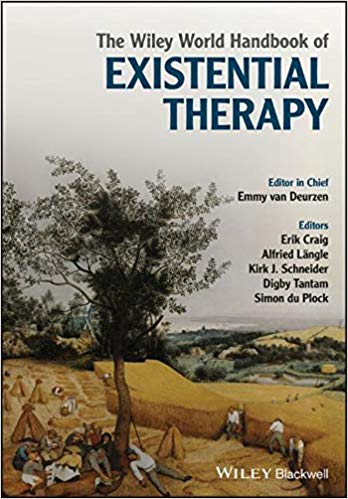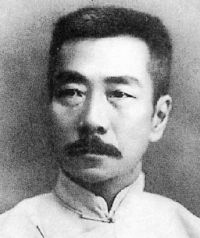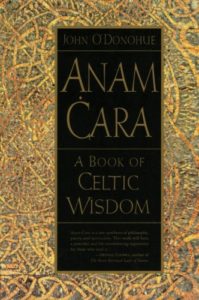 As an existential therapist, I’ve frequently heard colleagues and students comment, “I’ve always liked existential theory, but I don’t know what to do with it in the therapy room.” Students considering taking a course on existential therapy have also asked questions such as, “Am I going to be able to understand this theory?,” “Are we going to have to read Kierkegaard and Sartre?,” and “Will this class be relevant to what I do in therapy?”
As an existential therapist, I’ve frequently heard colleagues and students comment, “I’ve always liked existential theory, but I don’t know what to do with it in the therapy room.” Students considering taking a course on existential therapy have also asked questions such as, “Am I going to be able to understand this theory?,” “Are we going to have to read Kierkegaard and Sartre?,” and “Will this class be relevant to what I do in therapy?”
Existential psychotherapy seems to draw both intrigue and hesitation from students and professionals in the mental health field. This is not a surprise from a therapy approach embracing paradox and priding itself in being largely technique-less. However, the fear of existentialism is largely due to a lack of understanding. In this overview, I hope to demonstrate that existential therapy is less threatening than it first appears, but also much more exciting and powerful than is often realized.
Flexibility with Foundation
It is important to continually re-evaluate where you are at as a therapist, including where you are at in your theoretical development. For many years now I’ve considered myself an existential therapist, but continued to read broadly into other approaches to therapy. Through this process I’ve become heavily influenced by contemporary/relational psychoanalysis, humanistic therapy, and constructivist approaches. At times, I’ve wondered whether one of these approaches to therapy would be a better label for what I do on a day to day basis. However, as I’ve assessed this process I continue to realize existential is the best title from how I approach therapy.
One of the advantages of the existential approach is that it provides a framework from which other approaches can be integrated. Kirk Schneider and Rollo May (1995), two of the most influential existential therapists, outlined an existential integrative approach. This places existential therapy as the foundation, but allows for an integration of other theories. However, because of the emphasis on authenticity, genuineness, and critical thought, it also demands that approaches or aspects of approaches which are integrated remain consistent with the foundation.
The flexibility of existentialism comes from many sources. By its nature, existential therapy does not fit with the fundamentalism that develops within many other approaches. The most successful therapies adapt to the strengths of the individual therapist, but also to each client. As Yalom (2002) states, a new therapy is created with each client.
Existential psychotherapy also avoids the opposite problem of too much flexibility incurred in eclectic approaches. A weakness of many eclectic approaches is that they loose their foundation through their attempts to be adaptive and pragmatic. Pragmaticism often seeks to accomplish goals without taking into account the consequence of the process to or result of attaining the goals.
Central Tenets of Existential Thought
Yalom (1980) identified the four major themes of existential thought as death, freedom/responsibility, isolation/loneliness, and meaninglessness. While Yalom’s organization is generally agreed upon, it also reflects a significant point of distinction. Yalom states these themes in a manner which emphasizes their finality. Yalom does not believe there are ultimate answers to these questions. Rather, they are viewed as existential terrors with which we all much cope. Other existential thinkers disagree. May, Tillich, and many others state that while there may be ultimate answers to these issues, we are not able to fully attain these answers and the questions remain difficult.
The issue of death refers to the reality of a physical death, but is also symbolic of all human limitation. These two prongs of finiteness are difficult realities for many people to accept. Ernest Becker’s (1973) The Denial of Death, is often considered a classic in this discussion. Becker makes a penetrating analysis of our attempts to deny our finiteness. In Becker’s (1975) follow up, Escape from Evil, this argument is extended to the concept of evil. Becker purports the basis of evil is the denial of our finiteness.
Freedom is the next existential reality Yalom (1980) discusses. It is essential to connect freedom with responsibility. You cannot have one without the other. Yet, this is what many people seek and also can contribute to the problem which bring many individuals into therapy.
Isolation is the third existential reality (Yalom, 1980). Here, we are pushed to deal with the reality that everyone experiences isolation and loneliness. Yet, the desire for love, connection, and intimacy is arguably the strongest and most central human drive. Don’t let the odd placement of relationship as the third existential issue trick you. Many, maybe most, existential therapists place relationship is the primary issue of human existence.
Meaning, the final of the central existential issues, unites the three other theories. Humans are meaning seeking creatures. The attainment of meaning requires the facing of the three previous existential issues. This also returns us to relationship; many existentialists believe authentic relationship is the most powerful form of meaning a person can achieve.
How Therapy Heals
The common adage “it is the relationship that heals” is consistent with existential therapy. While it would be a mistake to claim any one theory on how change occurs according to existential theorists, the general tendency is toward a phenomenological, experiential, and relational perspective.
While the focus is on the relationship, there are many other aspects of therapy which contribute to the healing and growth process. First, insight is extremely important. Existential therapists may interpret aspects of the unconscious differently, but they still believe in the importance of the unconscious. Existential therapy also helps people make changes in their attitudes, decisions, behaviors, and thoughts through the awareness process. While the approach to accomplishing these changes is very different than brief therapy, existentialists agree they are part of healing.
A third component of healing is experience. Experience can be thought of in terms of experiencing a genuine relationship, but also is conducive to the idea of a corrective emotional experience talked about within many psychodynamic approaches to therapy.
As should be evident, healing occurs through a variety of processes in existential therapy. However, the therapy relationship remains a central component in all the various aspects of healing.
The Experience of the Therapist
The therapist takes a unique role in existential therapy. We are co-participants in a deeply rewarding, but sometimes painful process. While therapist and client sit facing each other, the process of therapy focuses their vision in the same direction. Existential therapy is, at its heart, a very collaborative approach.
Because of the focus on genuineness, authenticity, and awareness, it requires the therapist to be emotionally present and available. Additionally, it is vital that the existential therapist continue to keep their vision as clear as possible by doing their own work, continuing in the self-reflective process, and seeking out their own continued journey.
While it is often thought that depth therapists are passive in their way of relating with clients, this is a misnomer. Existential therapists are very actively engaged in the therapy process. However, their engagement is not in a directive manner. Rather, it’s an engagement in the relationship process as it unfolds and develops. Being passive is not genuine.
Advice for those Considering Becoming an Existential Therapist
If you are considering the pursuit of becoming an existential therapist, I would recommend beginning by reading three authors which will give you differing perspectives. Yalom is a good place to start because his reading is the most accessible. I recommend beginning with Love’s Executioner (1980) and Existential Psychotherapy (1989). The former begins with a brief overview of existential theory before offering 10 tales or case histories of existential therapy. The latter is the most comprehensive overview of existential therapy written to date.
Yalom was heavily influenced by Rollo May, who is generally considered the father of American Existential Psychotherapy. May, like Yalom, is an excellent writer who has an ability to make existentialism accessible. Love and Will (1969) and The Cry for Myth (1991) are two excellent places to start with Rollo May. The former has more clinical utility, while the latter is more abstract but an immensely important book.
Frankl provides a much different approach than May and Yalom. His book, Man’s Search for Meaning (1984), is a classic far beyond the realms of existential thought and psychotherapy. It begins with Frankl’s experience in the concentration camps during World War II and follows this with an overview of logotherapy (Frankl’s approach to existential therapy). However, for a better summary of Frankl’s approach to therapy, Man’s Search for UltimateMeaning (2000) is recommended.
Two other resources may help get a vision of the existential approach and deserve mentioning. First, are the many videos of James Bugental. Bugental was one of the early existential therapists strongly influenced by Rollo May and many humanistic psychologists. His legacy includes many brilliant therapy demonstration videos which do an excellent job of illustrating existential therapy. A second resource is Kirk Schneider’s Rediscovery of Awe. Using an existentially informed depth psychotherapy approach, Schneider gives a vision of how existential thought and depth psychotherapy can have an impact beyond the therapy room.
There are a growing number of other training opportunities in existential psychotherapy. If you remain interested after some initial reading on existential therapy, it may be beneficial to seek out one of these training opportunities and/or contact an experienced existential therapist to talk with them in more detail about what it like to be an existential therapist.
Conclusion
Being an existential therapist is an extremely exciting career. The experience of working with suffering people to help them find healing, new insight, and authentic relationship in itself is rewarding. An added benefit is the colleagues you will meet. It is a wonderful group of people that is drawn toward existential therapy and we are always happy to welcome new colleagues.




 Society and the academy often tend to fluctuate between idealizing history and devaluing it. As we witness many tragic errors of the past repeated in contemporary society, it is evident that engagement with history is critically important for our present and our future. History can best aid us when it is not idealized or devalued, but rather engaged with honestly through consideration of both the good and tragic aspects of history.
Society and the academy often tend to fluctuate between idealizing history and devaluing it. As we witness many tragic errors of the past repeated in contemporary society, it is evident that engagement with history is critically important for our present and our future. History can best aid us when it is not idealized or devalued, but rather engaged with honestly through consideration of both the good and tragic aspects of history. The idea of finding oneself if deeply embedded in pop views of psychology. However, this understanding of “the self” and therapy is based upon some faulty assumptions about the nature of the self, which are explored in this blog. Read the full blog at the link above.
The idea of finding oneself if deeply embedded in pop views of psychology. However, this understanding of “the self” and therapy is based upon some faulty assumptions about the nature of the self, which are explored in this blog. Read the full blog at the link above. As an existential therapist, I’ve frequently heard colleagues and students comment, “I’ve always liked existential theory, but I don’t know what to do with it in the therapy room.” Students considering taking a course on existential therapy have also asked questions such as, “Am I going to be able to understand this theory?,” “Are we going to have to read Kierkegaard and Sartre?,” and “Will this class be relevant to what I do in therapy?”
As an existential therapist, I’ve frequently heard colleagues and students comment, “I’ve always liked existential theory, but I don’t know what to do with it in the therapy room.” Students considering taking a course on existential therapy have also asked questions such as, “Am I going to be able to understand this theory?,” “Are we going to have to read Kierkegaard and Sartre?,” and “Will this class be relevant to what I do in therapy?” James Olthuis is an impressive therapist and writer. I was first introduced to this book when attending a presentation on Olthuis’s approach to therapy. I was so struck by the deep compassion and love that was evident in his presence. When providing a therapy demonstration, it was evident that Olthuis is truly gifted in his ability to connect with people and recognize their suffering.
James Olthuis is an impressive therapist and writer. I was first introduced to this book when attending a presentation on Olthuis’s approach to therapy. I was so struck by the deep compassion and love that was evident in his presence. When providing a therapy demonstration, it was evident that Olthuis is truly gifted in his ability to connect with people and recognize their suffering. Dr. Robert Murney, my long time mentor, was the first person to introduce me to Anam Cara. It was during a time when his wife had been diagnosed with cancer and he was trying to prepare for the possibility of losing her. He showed it to me one day and said this was the only book he had ever read seven times. The book intrigued me for two reason. First, it had such an incredible grip on Dr. Murney. But also because as he described the book it just seemed filled with existential wisdom. I quickly purchased the book and devoured it in a couple of days. It remains one of the most profoundly intriguing books I’ve ever read. Not more than a year later, we were joking that we should be getting a commission for all the copies of this book that we gave away as gifts or that were sold upon our encouragement.
Dr. Robert Murney, my long time mentor, was the first person to introduce me to Anam Cara. It was during a time when his wife had been diagnosed with cancer and he was trying to prepare for the possibility of losing her. He showed it to me one day and said this was the only book he had ever read seven times. The book intrigued me for two reason. First, it had such an incredible grip on Dr. Murney. But also because as he described the book it just seemed filled with existential wisdom. I quickly purchased the book and devoured it in a couple of days. It remains one of the most profoundly intriguing books I’ve ever read. Not more than a year later, we were joking that we should be getting a commission for all the copies of this book that we gave away as gifts or that were sold upon our encouragement. Thus Spoke Zarathustra may be Nietzsche’s most important and brilliant piece of writing, and Walter Kaufmann’s translation, with its insight translation notes, may be the most significant version. Though the overarching theme of this book is fairly evident, there is a tremendous amount of confusion not only about the book, but even its central theme. In concise terms, the thesis of this book is that people must overcome themselves. Nietzsche speaks of this in terms of the overman, which is often translated as superman.
Thus Spoke Zarathustra may be Nietzsche’s most important and brilliant piece of writing, and Walter Kaufmann’s translation, with its insight translation notes, may be the most significant version. Though the overarching theme of this book is fairly evident, there is a tremendous amount of confusion not only about the book, but even its central theme. In concise terms, the thesis of this book is that people must overcome themselves. Nietzsche speaks of this in terms of the overman, which is often translated as superman. In all the significant books written by Rollo May, this is the book which has had the greatest impact upon me and my thinking. The breadth of May’s knowledge and the depth of his understanding quickly become very evident. It is also interesting to note the influence of Jung’s theory in this book. While Jung’s influence is apparent in many of May’s works, perhaps none as much as this volume.
In all the significant books written by Rollo May, this is the book which has had the greatest impact upon me and my thinking. The breadth of May’s knowledge and the depth of his understanding quickly become very evident. It is also interesting to note the influence of Jung’s theory in this book. While Jung’s influence is apparent in many of May’s works, perhaps none as much as this volume.